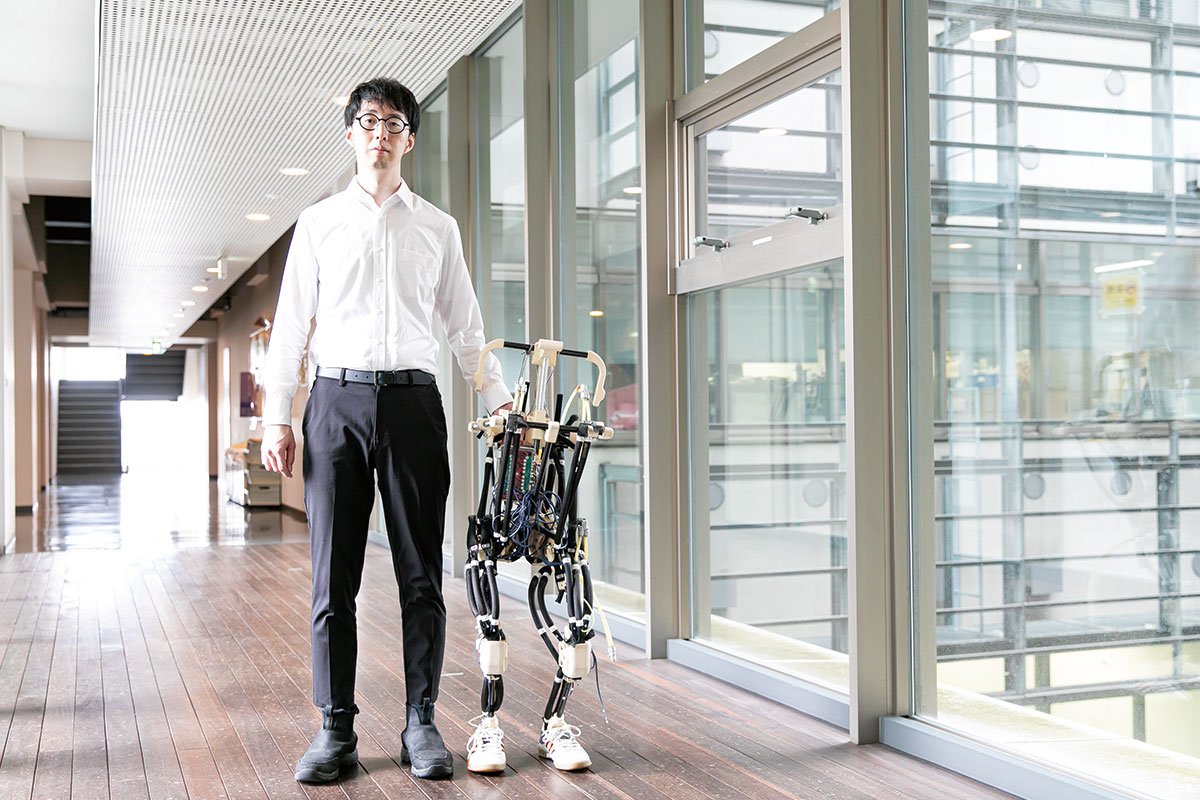A robotics expert leaps into the future Inspired by softness and living creatures

UTokyo 30s
Up-and-coming young researchers
Of the approximately 5,800 faculty members active at the University of Tokyo, we have selected nine energetic young researchers in their 30s. In terms of their job titles, there is one professor, two associate professors, one project associate professor, one lecturer, one project lecturer and three research associates. What kind of research are they engaged in day to day? And what is their temperament like? Let’s find out.
| Science of Soft Robots |
A robotics expert leaps into the future
Inspired by softness and living creatures
 Ryuma Niiyama Ryuma NiiyamaLecturer, Graduate School of Information Science and Technology |

For many people, hearing the word “robot” conjures up images of hard, metallic objects. This association is powerful when it comes to famous robots featured in Japanese animations such as “Gundam,” “Astro Boy,” and “Mazinger Z,” as well as for industrial robots working in factories. However, Lecturer Ryuma Niiyama’s research is concerned with “soft” robots that are clearly distinguished from such “hard” robots. The materials that soft robots are made of are not the only things about them that are “soft.” Other words that might fittingly describe them include squishable, stretchable, bendable, springy, harmless and cute.
“Since childhood, I’ve always loved living creatures as well as arts and crafts, and I wanted to create things that were like living creatures. After a life dedicated to robotics competitions at a college of technology and university, when I saw the walking robot ASIMO, I set my heart on trying to build something that would move more energetically and started working on a robot that could jump gracefully, like an animal.”
In 2004, he perceived that precise control of the joint angles was not essential, and attracted attention with a robot that could execute dynamic leaps by entrusting the instantaneous force of jumping and shock absorption of the landing to a pneumatic artificial muscle made out of a rubber tube. His work, however, received an unexpected evaluation.
“Maybe because I had only made the back legs, the general public thought I’d made some kind of frog-bot. Although as far as I was concerned it was another type of cat robot, different from Doraemon (Japan’s beloved robotic cat anime character).”
His next project was a running humanoid robot. The Athlete Robot heightened the single jumping action achieved in his previous work into a continuous movement by making two legs move back and forth. Here, again, was a robot comprised of only a lower body that made use of pneumatic artificial muscles and was equipped with feet like the artificial legs designed for short-distance runners.
Niiyama, who earned his degree through this series of studies, joined the Massachusetts Institute of Technology as a postdoctoral researcher in 2010, just as MIT was experiencing the emergence of the new field of soft robotics. Stimulated by his encounters with cheetah-type robots that ran on four legs, among other creations, he returned to the University of Tokyo in 2014 where he has devoted himself to research and teaching activities. So what challenges does he currently face as a leading figure in the Japanese world of soft robotics?
“Only a few of my colleagues are paying attention to this nascent field. But it is precisely because some areas remain strange and undefined that we can savor the real thrill of research that creates a quantum leap from 0 to 1. I would especially welcome to this research area anyone who loves living creatures and machines.”
Soft robots also have weaknesses, such as their limitations in terms of durability, reliability and lack of power. However, working next to human beings entails the need for softness, as with Baymax (the inflatable robot character from the Disney film “Big Hero 6”). In fact, when Karel Capek first coined the word “robot,” the material he envisioned was apparently not metal but a kind of synthetic protoplasm. Softness may have been an innate characteristic of the original robots.
The robotics expert Niiyama says that creating robots as tangible objects elicits a true sense that they are living in the real world. The objects he deals with may be soft, but Niiyama’s love for robots is solid in every respect.
| Q & A | |
|---|---|
| What kind of robot would you like to build in the long run? | “A robot that grows, repairs itself and propagates like a living creature.” |
| Is there a robot you wish you’d come up with yourself? | “Qoobo by Yukai Engineering. It’s a therapy robot shaped like a cushion with a tail.” |
| What do you feel when you look at people in their thirties? | “I feel they have a strong sense of earning positions through their own strengths.” |
| What do you feel when you look at babies? | “It’s amazing how they gradually learn how to do things they couldn’t do before. Robotics really can’t keep pace with them.” |
| Book by Lecturer Ryuma Niiyama: Yawarakai Robotto [Soft Robots] (Kaneko Shobo, 2018; ¥2,300 + tax) |
* This article was originally printed in Tansei 39 (Japanese language only). All information in this article is as of September 2019.






